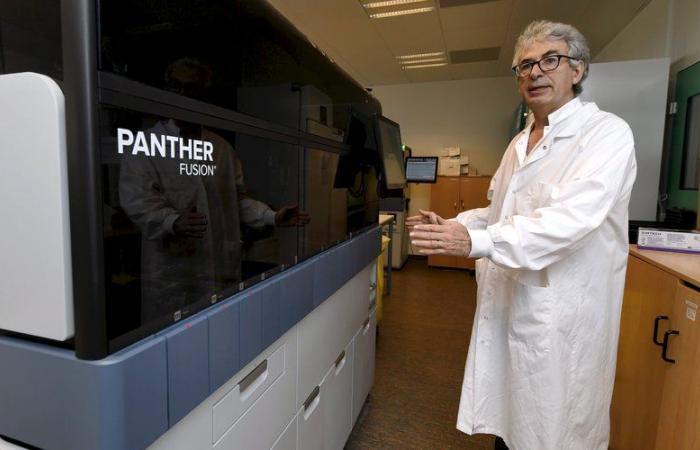the essential
FLiRT, a sub-variant of SARS-CoV2 responsible for Covid-19, has appeared. If it does not cause serious forms, virologists remain vigilant and closely monitor its evolution.
Professor Jacques Izopet is head of the virology department at Toulouse University Hospital. His team has been monitoring the evolution of SARS-CoV-2 virus variants since the beginning of the Covid-19 epidemic.
Read also :
CASE. Covid-19: new variant, increase in consultations, high transmissibility… Should we fear a resumption of the epidemic?
What is this new variant responsible for the current resurgence of the Covid epidemic?
Regularly since the Covid crisis, tests have been carried out in the laboratory and samples sequenced, to determine possible developments in SARS-CoV-2. This involves monitoring the cellular genome of this virus, observing mutations in its surface proteins and how they interact with our antibodies. The virus currently circulating still belongs to the large family of the Omicron variant, but, under this variant, different lineages exist. The current virus belongs to the JN1 lineage and the KP-2 subcategory. We speak of the FLiRT virus, in reference to the mutations observed in its surface proteins.
If the epidemic resumption is mentioned, it is because its proportion is increasing regularly, with currently between 20 and 30% preponderance at the national level. However, this estimate remains approximate given the low number of tests; and there are at this stage no hospital repercussions in terms of admissions of serious cases. It is expected that little by little the KP-2 will reach 100%.
Read also :
INTERVIEW. Covid-19: “The peak could be reached this summer around the end of July, or even mid-August”, estimates an epidemiologist
“No severe forms”
What characterizes it from a clinical point of view?
This new variant is not associated with more severe forms and its pathogenic power remains equivalent to the previous ones. What determines the pathogenic power of these viruses is the host itself and the immunity it has developed over the course of previous illnesses and vaccination. The population currently has a good level of immunity which explains the absence of severe forms; but in the absence of very marked clinical manifestations, it is nevertheless very important to monitor the cellular genome of these viruses in the laboratory
Read also :
Covid 19: “52% increase in emergency room visits”, new variant… Where are we with the epidemic before the summer?
Read also :
Covid-19: health crisis “now over”, recall campaign less followed… Are we still getting vaccinated against the coronavirus?
The WHO no longer considers Covid-19 a global pandemic, however, is the risk of a severe mutation still to be feared?
In the current state of knowledge, as the virus circulates a lot and vaccines are widely used in the population, the hypothesis of a very virulent SARS-CoV-2, which would generate what we have seen in the past , is not retained. Collective immunity is increasing, it is reinforced, which is currently keeping us away from the rapid emergence of a risk. However, we obviously cannot rely solely on the natural circulation of the virus. The vaccine remains an essential weapon, particularly for the most vulnerable people from the fall, a period when we are faced with greater circulation of the virus.






